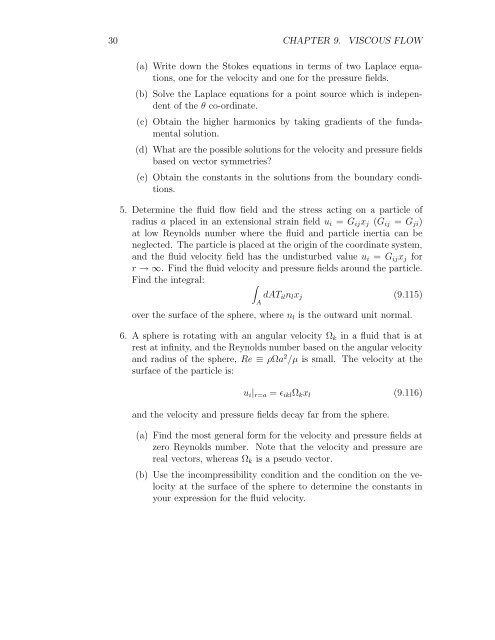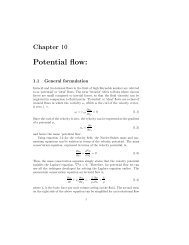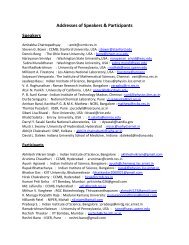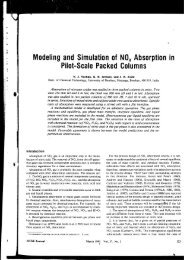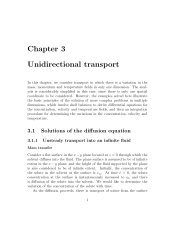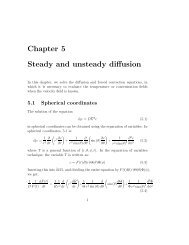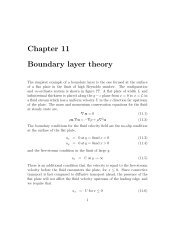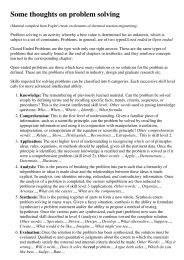You also want an ePaper? Increase the reach of your titles
YUMPU automatically turns print PDFs into web optimized ePapers that Google loves.
30 CHAPTER 9. VISCOUS FLOW<br />
(a) Write down the Stokes equations in terms of two Laplace equations,<br />
one for the velocity and one for the pressure fields.<br />
(b) Solve the Laplace equations for a point source which is independent<br />
of the θ co-ordinate.<br />
(c) Obtain the higher harmonics by taking gradients of the fundamental<br />
solution.<br />
(d) What are the possible solutions for the velocity and pressure fields<br />
based on vector symmetries<br />
(e) Obtain the constants in the solutions from the boundary conditions.<br />
5. Determine the fluid <strong>flow</strong> field and the stress acting on a particle of<br />
radius a placed in an extensional strain field u i = G ij x j (G ij = G ji )<br />
at low Reynolds number where the fluid and particle inertia can be<br />
neglected. The particle is placed at the origin of the coordinate system,<br />
and the fluid velocity field has the undisturbed value u i = G ij x j for<br />
r → ∞. Find the fluid velocity and pressure fields around the particle.<br />
Find the integral: ∫<br />
dAT il n l x j (9.115)<br />
A<br />
over the surface of the sphere, where n l is the outward unit normal.<br />
6. A sphere is rotating with an angular velocity Ω k in a fluid that is at<br />
rest at infinity, and the Reynolds number based on the angular velocity<br />
and radius of the sphere, Re ≡ ρΩa 2 /µ is small. The velocity at the<br />
surface of the particle is:<br />
u i | r=a = ǫ ikl Ω k x l (9.116)<br />
and the velocity and pressure fields decay far from the sphere.<br />
(a) Find the most general form for the velocity and pressure fields at<br />
zero Reynolds number. Note that the velocity and pressure are<br />
real vectors, whereas Ω k is a pseudo vector.<br />
(b) Use the incompressibility condition and the condition on the velocity<br />
at the surface of the sphere to determine the constants in<br />
your expression for the fluid velocity.


